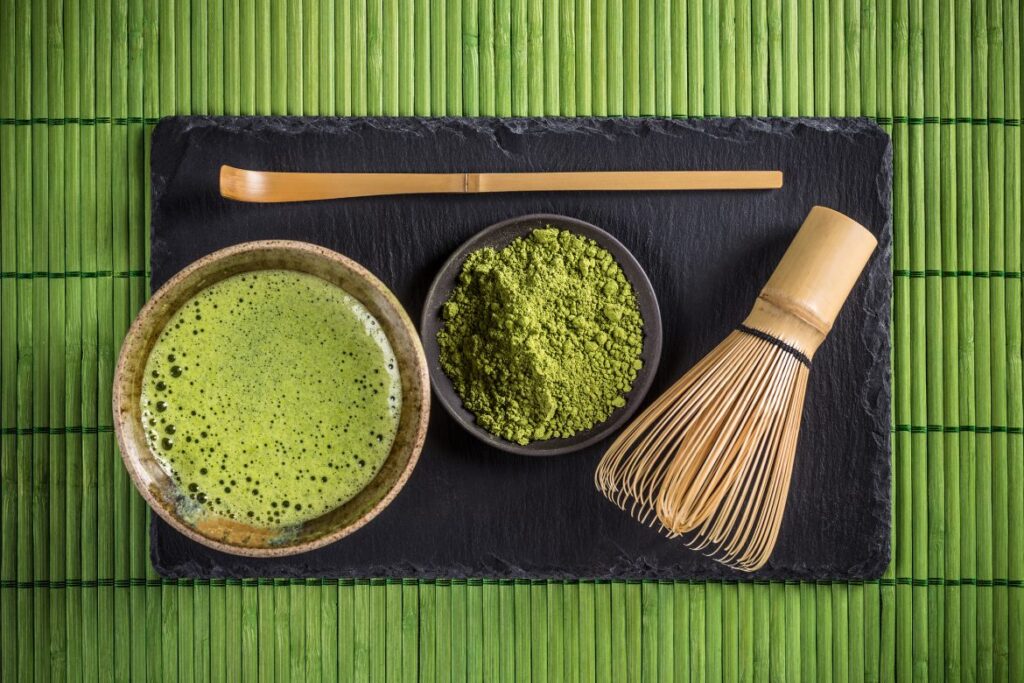In recent years matcha tea has experienced a surge in popularity, captivating the taste buds and curiosity of people worldwide. Renowned for its vibrant green hue, unique flavor profile, and numerous health benefits, matcha has become a staple in many households and cafes. However, beyond its trendy status, matcha boasts a rich history, intricate production process, and deep-rooted cultural significance. In this comprehensive exploration, we delve into the fascinating world of matcha tea, uncovering its origins, health benefits, ceremonial traditions, and modern uses.
Understanding Matcha
Matcha, a finely ground powder made from specially cultivated green tea leaves, has its roots deeply embedded in Japanese culture. The word “matcha” itself translates to “powdered tea,” highlighting its distinctive form. While matcha has gained global recognition in recent years, its history dates back centuries, with origins rooted in China during the Tang Dynasty (618-907 CE). Japanese Zen Buddhist monks later introduced matcha to Japan in the 12th century, where it became an integral part of traditional Japanese tea ceremonies.
The production of matcha involves meticulous cultivation and harvesting techniques. The tea plants, primarily Camellia sinensis, undergo a shading process several weeks before harvest. This shading, known as “tana,” encourages the plants to produce increased levels of chlorophyll and amino acids, resulting in vibrant green leaves with enhanced flavor and nutritional properties.
Upon harvest, the leaves are steamed to prevent oxidation, then carefully dried and deveined to prepare for the grinding process. Traditional matcha production employs granite stone mills to finely grind the tea leaves into a powder, a method that preserves the integrity of the leaves and produces a smooth, velvety texture.
Health Benefits of Matcha
Beyond its exquisite taste and cultural significance, matcha offers an array of health benefits, making it a popular choice among wellness enthusiasts. Here are some notable advantages of incorporating matcha into your diet:
Rich in Antioxidants: Matcha is packed with catechins, a type of antioxidant known for its powerful disease-fighting properties. Epigallocatechin gallate (EGCG), the most abundant catechin in matcha, helps combat oxidative stress and inflammation, promoting overall health and well-being.
Boosts Metabolism and Burns Fat: Matcha contains caffeine and a compound called EGCG, which synergistically promote thermogenesis and fat oxidation. Regular consumption of matcha may aid in weight management and increase metabolic rate.
Enhances Cognitive Function: The combination of caffeine and L-theanine in matcha provides a balanced boost of energy and mental clarity without the jitters often associated with coffee. This synergy promotes improved focus, concentration, and cognitive function.
Supports Heart Health: Studies suggest that the antioxidants in matcha may help reduce LDL cholesterol levels and lower the risk of heart disease. Additionally, the amino acid L-theanine in matcha has been shown to promote relaxation and reduce stress, contributing to heart health.
Detoxifies the Body: The chlorophyll content in matcha gives it a vibrant green color and offers detoxifying properties. Chlorophyll helps eliminate toxins and heavy metals from the body, supporting overall detoxification and cleansing.
The Art of the Matcha Tea Ceremony
Central to Japanese culture, the matcha tea ceremony, known as “chanoyu” or “sado,” embodies harmony, respect, purity, and tranquility. Dating back to the 16th century, the tea ceremony evolved from Zen Buddhist rituals and samurai traditions, emphasizing mindfulness and spiritual connection.
The tea ceremony unfolds in a meticulously orchestrated series of movements, each symbolizing respect for the guests, the tea, and the moment itself. From the preparation of the matcha to the serving of the tea, every gesture is deliberate and imbued with meaning.
The host begins by cleansing and purifying the utensils, then carefully measures the matcha powder and hot water before whisking them together in a circular motion until frothy. The tea is then served to the guests, who receive it with gratitude and reverence, savoring each sip in silence.
Beyond its ceremonial significance, the tea ceremony fosters a sense of mindfulness, fostering a deep connection to the present moment and those around us. It serves as a reminder to slow down, appreciate the beauty in simplicity, and cultivate inner peace.
Modern Applications of Matcha
While the traditional tea ceremony remains a cherished practice in Japan, matcha has also found its way into modern culinary creations and wellness products worldwide. From matcha lattes and desserts to skincare and beauty products, the versatility of matcha knows no bounds.
Matcha lattes, in particular, have gained widespread popularity as a healthier alternative to coffee-based beverages. Combining frothy matcha with steamed milk or milk alternatives creates a creamy, indulgent drink packed with antioxidants and energy-boosting properties.
In the realm of culinary arts, matcha’s vibrant color and distinct flavor profile make it a versatile ingredient in both sweet and savory dishes. From matcha-infused baked goods to savory sauces and marinades, chefs and home cooks alike are experimenting with innovative ways to incorporate matcha into their recipes.
Moreover, the beauty and skincare industry has embraced matcha for its potent antioxidant properties and skin-nourishing benefits. Matcha-based face masks, serums, and creams offer a natural solution for detoxifying, rejuvenating, and protecting the skin against environmental stressors.
Conclusion
Matcha tea transcends its status as a trendy beverage, embodying a rich tapestry of history, culture, and health benefits. From its ancient origins in Japan to its modern applications in culinary and wellness practices, matcha continues to captivate and inspire people worldwide.
Whether enjoyed in a traditional tea ceremony, sipped as a frothy latte, or incorporated into culinary creations and skincare routines, matcha offers a holistic experience that nourishes the body, mind, and soul. As we savor each sip of this vibrant green elixir, let us embrace the spirit of mindfulness, gratitude, and harmony that accompanies the art of matcha.







